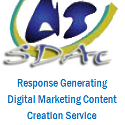Decide If You NEED To Read This Article (Take A Quick Quiz!): This article features my Layman’s Business Variable Costs Control Systems Awareness Quiz™ below. If you answer NO to even ONE of its seventeen (17) questions, there is a good chance the information contained in this article can help you.
Layman’s Business Variable Costs Control Systems Awareness Quiz:
The quiz poses simple questions designed to get you thinking about possible areas in which you can look to apply spreadsheet facilitated VC monitoring/control and reduction initiatives in your business.
|
||||||||||||||||||||||||||||||||||||||||||||||||||||||||||||
Every business wants increased profits, and each one goes about achieving that purpose in different ways: Some employ price increases. Others make promotional offers to boost volume sales.
The problem in the latter case tends to be that they still have to spend more to get more sales, and often if not well managed, there may not be any significant difference in bottom line margins achieved, especially when competitors launch a counter event.
I describe tested and proven ways by which anyone can intelligently implement Variable Costs (VC) Monitoring/Control and Reduction initiatives – supported by spreadsheet tracking/analyses – to increase chances of routinely recording optimal profit margins even when prices remain fixed and/or competition is fierce.
This Article Is Based On Proven Real-Life Practice
The ideas, concepts and strategies I advocate for adoption in this article are based on proven practice. In fact, the case study and specific analogies used are based on real-life activities that I personally partook in over a period of six years, as a manager in a large blue-chip multinational brewing company.
Read my article titled “Use Custom Automation Of Your Spreadsheet Reports To Drive Down Costs And Increase Your Profits” for additional details of my experiences in this area, while in paid employment.
What you learn from reading the above mentioned article, will hopefully encourage you to seriously explore ways to put the information provided in this article to good use for your business.
The principles described below can be successfully adapted to virtually any business operation – be it service or production based.
If you need any help with thinking up ways/means of putting them to use, I would be pleased to help out.
Case Study
“Because its purpose is to create a customer, the business enterprise has two – and only these two – basic functions: marketing and innovation. Marketing and Innovation produce results. All the others are costs” – Peter Drucker
What follows is a bit of a simplistic example, but it serves the intended purpose of providing a basis for the following discussion. The logic on which this analogy is based can be applied to any situation.
African Arts Concepts Limited (a hypothetical company) uses three raw materials, A, B and C in producing their flagship brand Product Z – which sells for N14,000 naira (about $100 equivalent, using a N140.00 Naira to $1.00 US dollar currency conversion rate) per unit – in the following combination:
5 lengths of material A(N2,500.00) + 1 kg of material B(N1,500.00) + 20 pieces of material C(N,2500.00) = 1 unit of Product Z(N6,500.00 Naira or $46.43 US Dollars).
Assume other (say operational and marketing) expenses amount to N500 per unit of Product Z , the Cost Price for one unit would be N7,000.00($50.00) – approximately. That means whenever 1 unit of Product Z is sold, a gross profit of N7,000 (N14,000 – N7,000) or $50.00 USD is made by African Arts Concepts Ltd.
Table 1.0 – Costs Breakdown(Based On Normal Usage Of All Materials)
|
||||||||||||||||||||||||||||||||||||||||
THE PROBLEM(Common To Many Businesses)
Now imagine that a staff of African Arts Concepts Limited begins to over use (and this does happen!) material B by say 0.5kg for every unit of Product Z. The usage cost for(i.e. cost of using) Material B per unit of Product Z produced will become N2,250(N1,500.00 plus N750.00).
5 lengths of material A(N2,500.00) + 1 kg of material B(N1,500.00) + 0.5 kg of material B(unrecorded N750.00 usage cost ) + 20 pieces of material C(N2,500.00) = 1 unit of Product Z(N7,250.00 Naira or $51.79 US Dollars).
Adding the other (operational and marketing) expenses of N500 per unit of Product Z, would bring the cost price/unit of Product Z to N7,750($55.4 USD), instead of N7,000($50.00 US Dollars). In otherwords, the company incurs an – unnecessary – N750 or $5.4 US Dollars additional cost to produce EACH unit of Product Z.
Table 2.0 – Costs Breakdown(Based On Over-Usage Of Material B)
|
||||||||||||||||||||||||||||||||||||||||||||||||||||
That extra $5.4 would most likely be LOST because:
(a). African Arts Concepts Limited may not detect it – except they have monitoring systems(e.g. a custom automated Variable Cost Analysis Spreadsheet) set up to alert them to such occurrences.
That batch of Product Z will therefore still be sold for $100.00 US Dollars per unit(a 20% LOSS!).
(b). Even if it is detected, little can be done to correct it for batches that would already have been produced BEFORE discovery/correction of the problem.
Multiple Negative Consequences
If continued unchecked, this over usage can quickly cause huge losses: Multiply the N750 naira ($5.4 USD) over usage by say 1000 units of Z produced in a month and you get N750,000($5,400 USD) – lost unknowingly.(That $5,400 USD over usage equates to losing 54 market ready units of Product Z!).
What will typically happen is that at the end of the month, the company would find that they have 500kg LESS of material B left than expected. This would subsequently require them to make an additional unplanned purchase of material B using money budgeted for other purposes – thereby disrupting cash flow etc.
The foregoing is one major reason why some businesses that appear to be doing well suddenly go under, or record low profits/losses! They fail to keep a grip on their real costs of operation. What has been described here is applicable to virtually any type of business – be it service or product based. One only needs to change the items of income and expenditure considered in delivering the relevant product/service.
Question: How Do I Prevent A Problem Like The One Above Happening To Me?
Answer: By Adopting Variable Costs(VC) Monitoring/Control Techniques.
I like to think of Variable Costs, from a lay man’s perspective, as those expenses you incur, which can(and do) vary depending on your ability to find cheaper yet equally – if not more – effective ways to do what you do, when compared to your current methods.
To implement a VC Monitoring/Control system, you can follow the steps outlined below – making needed adjustments to suit the peculiarities of your unique situation or need (Note that the use of spreadsheets is integral to the approach I recommend, as it facilitates sustainability of systems set up).
Step 1 : Collate Relevant Data in Spreadsheets :
Start recording and analysing your business revenue and daily operating expenses, including variable cost elements such as how much you spend on marketing, transportation, phone calls, materials usage etc.
You can easily do this by creating Excel spreadsheets with raw data entry interfaces linked to standard reporting templates(which generate meaningful output from formulas applied to your raw data).
For best results, you might find recording materials usages in the same spreadsheet, with their corresponding prices helps in deriving expenses relevant to materials usages(by simple linking of cells to be multiplied e.g.”Kgs” used by price per kg).
Step 2 : Benchmark Your Process :
You will also need to do some benchmarking by obtaining detailed industry data for businesses similar to yours. Using that data, you would derive weighted averages, upper and lower control limits etc.
These could then be charted in your spreadsheet using actual data you would periodically post. Your objective in managing your business/process would then be to ensure your Key Performance Indicators(KPIs) fall between the established control limits implying that it is performing optimally.
If during your daily, weekly or monthly recording and monitoring, you then notice any of your charted KPIs deviating outside the favourable range, you would be able to quickly investigate and correct the problem before it goes too far.
In the case study used above for example, if a target usage rate of material B per unit of Product Z produced had been routinely recorded in a spreadsheet, and plotted on say a Schewart chart, the CONTINUOUS over usage of 0.5kg per unit would have reflected in the slope of the chart – and therefore led to early detection.
Again, this is a simplistic approach. More effective methods(e.g. automated plotting of a Cusum – Cumulative Sum Deviation chart) can be easily employed using spreadsheets with about the same effort. I cover Cusum charts, and how to use them, in considerable detail in a new PDF report I’m working on.titled “Simple Performance Measurement/Process Control Tools You Can Use In Your Business”.
Question: Okay, That’s To Detect/Stop Things Getting Out Of Hand. But HOW Exactly Do I Go About INCREASING My Profits Without Raising My Prices?
Answer: By Applying Practical Variable Costs(VC) REDUCTION Techniques.
As I earlier stated, your variable costs are those expenses you incur, which can(and do) vary depending on your ability to find cheaper yet equally if not more effective ways to do what you do, when compared to your current methods.
By implication therefore, a VC REDUCTION Strategy is bound to make a difference to your bottom line profits.
Adopting this strategy means you will actively encourage/engage in the routine search for quick, easy, practical, inexpensive, and sustainable ways to drastically cut down on the expenses required to make and/or deliver your products and services to those who want them.
The foregoing underscores Peter Drucker’s assertion that Marketing and Innovation are the two basic functions in any business which can enhance its profitability. All others are costs.
Therefore To Increase Your Profits Without Raising Prices :
1. Increase Your Marketing (While Reducing Your VC):
Find more NEW customers more frequently. But in doing so, think up cheaper and more effective/efficient ways to reach more people who fit your target audience profile. Even if you already have a website, chances are there are still a number of viable ways you could use it to achieve this purpose, that you are YET to explore. Take it from me. I get so so much done at little or no extra expense using my website resources more creatively.
One reason why this is possible is because I have devoted hundreds of hours to learning web design, custom CGI programming and web marketing techniques.
If you actively work to find new customers, you create a growing pool of clients from whom you can generate referrals and repeat businesses resulting in higher sales volumes/turnover. Also, it helps you cover gaps that will occur periodically from client attrition or turnover.
ONE GOOD WAY – Use A Website:
Traditional methods of business marketing and advertising can be quite expensive especially when used for protracted periods. The dilemma of the business owner who seeks increased exposure therefore tends to be, finding a reliable way to stay in touch with(or visible to) her target audience without going bankrupt.
The answer, from my experience lies in learning how to intelligently leverage technology and the Internet to complement the marketing efforts being made offline, in a way that cumulatively lowers overall expenses incurred – resulting in increased profits over time.
Read my article titled “Zero Cost Methods To Boost Your Business Marketing and Cuts Your Costs Using Your Website” for tested and proven ideas, methods, tools and resources you can use.
2. Innovate More (By Reducing Your VC) :
Actively work to discover and implement quicker, cheaper and easier ways to deliver the same products/services to those who want them. Assume you previously could only turn out 1000 units of your product per month at a cost of $5.00 per unit(to sell at $5.75 per unit).
Then following a change in your procedures, suggested by one of your employees – who gets rewarded accordingly  – you are subsequently able to routinely churn out 1500 units per month at the same $5.00 cost per unit, the implications for your year end profitability are obvious.
– you are subsequently able to routinely churn out 1500 units per month at the same $5.00 cost per unit, the implications for your year end profitability are obvious.
Entrenching a continuous improvement culture in your operations will facilitate innovation – to your ultimate benefit.
Use Your Spreadsheet And Accountant
To reduce your VCs, you need to measure, record, analyse and trend your data. Many of the income and expense items you need to capture in your monitoring are likely to be the same ones your accountant/auditor would focus on in helping you prepare your end of year accounts for tax returns computation.
Therefore, at this stage you might find it useful to involve your accountant in generating the spreadsheet you want to use – or even have him give you one s/he uses, so you can adapt it for your purposes.
Justification For Using VC Reduction(Instead Of Price Increases) To Increase Profits
No matter how large your turnover or revenue is, control of your expenses is the only sure way to reasonably ensure your profits are maintained in the face of fierce/increasing competition, and/or market fluctuations. This is especially so, because you cannot raise your selling prices at will – else you price yourself out of the reach of your target customers.
Three(3) Practical Benefits Of Applying VC Monitoring/Control And Reduction Initiatives In Your Business
1. Long Term Affordability Of Your Products/Services
You will be able to price more competitively and still retain good profit margins even when market situations do not favour most other operators. You would have greater customer appeal. More customers are likely to be able to afford you i.e. your VC reduction efforts enable you price your products/service in such a way that they never become too expensive for your clients/customers.
Also, your ability to cut down your expenses without negatively affecting your product/service quality or delivery, will make it possible for you to offer lower prices/rates and depend on sales volume to sustain the same profit margins. The resultant increased customer base, will naturally afford you increased marketing opportunities, Enhanced ability to withstand/survive market place or industry fluctuations and so on.
This is easy to appreciate. A good example of a business that obviously has a competitive edge of this type in the market place is Richard Branson’s Virgin Airlines.
They offer some of the lowest rates available in the airline industry, often delivering about the same quality of service as their competitors – who may not all necessarily be too pleased about it :-). If Virgin did not have the means of sustaining this practice, while remaining profitable, they would have crashed out of business long ago.
I never get the accountants in before I start up a business. It’s done on gut feeling, especially if I can see that they are taking the mickey out of the consumer. – Richard Branson
2. Increased Assurance Of Sustainable/Increasing profits
Which would you prefer: More Revenue? Or more Profits? At the risk of stating the obvious, if you do not control your expenses, your revenue can increase without a corresponding increase in your PROFITS. One does not have to be in a business where billions need to be spent before knowing that this is true.
When two units – instead of one – of a raw material are used to produce 1 unit of your bottled juice, you are spending more to produce that bottle, hence your profit margin for that bottle will drop by the value of that extra unit of raw material used, be it with or without your knowledge.
Whether you know about it or not; whether you measure it or not is immaterial, and will not change the fact that you will earn a lower margin on that product.
If that then happens to many products(or a larger number of the same product), you may find at the month or year end, you get a shocking low profit declaration when you(or your accountant/auditor) reconcile expenses, revenues etc for the period.
Things could even fall apart before then. That’s when you see a company that gets plenty of business from old and new clients struggling to find money to run daily operations and make salaries payment(cash flow)!
This is why setting up a Variable Costs Monitoring/Control and Reduction System is important. It will help you keep a close watch on all the important measures of your business’ operational performance, so that you can easily, discover undesirable trends and nip them in the bud.
At the same time, you would be able to intelligently experiment with changes aimed at reducing your operations costs, and monitor their impact in order to decide whether or not make them permanent.
3. Greater Operational Efficiency In Using Labour/Resources/Time :
Uncover the invisible costs by using spreadsheet tracking. Some costs are more visible than others. It is those “invisible” cost channels that I refer to here. They are the “potential” profit drain pipes.
Do you know how to identify, monitor and control them in your business? Are you sure you’re not missing a few critical ones? Often times they are avoidable – should not be there – but because the business owner has no monitoring/control system in place, they build up over time, till they cause BIG problems.
Examples include theft/pilfering by outsiders or staff, materials over usages, idle/downtimes in different aspects of your operations, overstaffing, etc.
All these things can – and do – happen. The challenge is for the business owner or decision maker to setup monitoring systems to quickly throw up inconsistencies in the inflow/outflow etc of the concerned items.
Want To REMAIN In Business For The Long Term?
As more and more people go into business for themselves, every owner will have to contend with increased availability of the same products/services in the same market.
As has happened in the past, some will have done their operations management so efficiently that they will be able to drop their prices significantly below the market price(or refuse to increase them), and still make as much profit as (or even more than!) their rivals.
The latter on the other hand would struggle to match such price drops if their operating costs are higher – possibly resulting in their being forced out of the market.
This applies to one-man businesses as well as corporate multinationals, be they product manufacturers, distributors, resellers or service providers. The only people who don’t worry about cutting costs in order to give customers/clients stable or even lower prices, are monopolies(due to lack of competitors) and those who “buy their way” to new business.
For those who play by the rules, your ultimate objective, if your business is to GROW, will have to be to put money in your pocket, that you can spend without looking over your shoulder for creditors(or the IRS -. for taxes) and without running out of money to run your business(cash flow).
The wise owner will make a habit of continually exploring Variable Cost Monitoring/Control and Reduction initiatives, that will enable successful delivery of larger numbers of products/services at lesser cost, in lesser time, and using lesser resources.
I could go on, but I think the point I’ve made here is clear enough already. So much thinking/re-organisation will have to be done initially to develop the needed systems. But the process once started, can only get easier. And the positive benefits derivable from adopting this approach will be immediately obvious.
If You Remember Nothing Else, Remember The Following:
1. One good way to maintain and/or significantly increase your profits without raising your prices, is to reduce your Variable Costs(VCs).
2. You can reduce your variable costs by marketing more efficiently (getting more customers at lesser cost, AND maintaining them at lower expense).
I once read an article that proposed a new parameter COCS: Cost Of Customers Sold or Served). This could be adopted as a Key Performance Indicator(KPI).
3. You can also reduce your variable costs by innovating more(i.e. developing greater efficiency in your routine internal operations and/or product/service delivery).
That way, you would be able to produce/deliver more products and/or services with less effort, in less time, and using less resources. All of these would imply LOWER expenses/costs, leading to INCREASED profit retention per unit of product/service sold.
4. There is saying that : “You cannot manage something, if you do not measure it. Nor can you measure it, if you do not record it”.
Spreadsheet tracking will help you conveniently implement and sustain the process of monitoring, controlling and/or reducing your VCs. You will need to do this so as to constantly evaluate progress of your VC monitoring/control and reduction initiatives.
NB: This article is based on excerpts from the original piece which was first published in 2007 via www.spontaneousdevelopment.com – Tayo Solagbade’s former 9 year old domain name.
****************************************
Tayo Solagbade’s Excel Heaven™ is the FIRST provider of Preprogrammed and Custom Spreadsheet based solutions in Nigeria.
We offer Workbook Auditing/Optimisation and VBA Automation; Custom Spreadsheet Software Development; Sales; Job-Based Spreadsheet Coaching; and Consulting/Advisory Services on effective application of spreadsheets for business use.
See video demos of Tayo’s custom built MS Excel applications at http://www.youtube.com/user/TKSolagbadeSDAc
Visit our Excel Heaven mini-site at :









Warning: count(): Parameter must be an array or an object that implements Countable in /home1/tayoswdg/public_html/sdnuggets/wp-includes/class-wp-comment-query.php on line 399